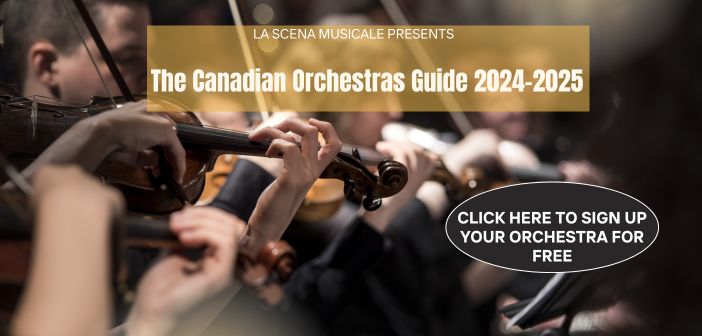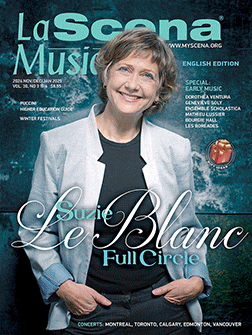In the hands of anyone other than Stephen Hough, this album would be either a horrible indulgence or a public act of psychoanalysis. Hough is far too fastidious a pianist to be suspected of such temptations. What we have here are morsels by composers great and (mostly) small, work the evoke a trance-like state between sleep and wakefulness. I’m not sure about Hough’s opening setting of Strauss’s overworked Radetsky March, but thereafter he hardly puts a finger wrong. Das alte Lied by Henry Love will blow you away; Love was the pseudonym of Hilde Loewe, a Viennese refugee in London.…
Browsing: Lebrecht Weekly
In times of stress I reach for Bach in the raw, one instrument, one pair of hands. I’m choosy who I listen to when the nerves are frayed. The immortal interpretations – Gould in the Goldbergs, Milstein in the Sonatas and Partitas – are too profound, too perfect, to afford prompt and gentle relief. Two new releases are just what the soul doctor ordered. Peter Hill is an English pianist, a Messaien expert who studied with Nadia Boulander and taught at the University of Sheffield. I have come across him on record and radio, never in the concert hall. His…
Domenico Scarlatti: Sonatas, volume 1 (Chandos) It feels dangerously transgressive, and thus all the more enjoyable, to listen to Scarlatti’s keyboard pieces on a full-throated Steinway D piano set up in an English country barn. Why musicians submit so readily to the tyranny of political correctness – composers to the imposition of serialism, performers to the doctrines of period practice – is a mystery to me. So to find a young pianist at the start of his path who is prepared to defy the professorial rule makers and play a Bach contemporary on a modern big banger of a concert…
Arvo Pärt: The Symphonies (ECM New Series) Worth buying for the booklet alone. A symphonic cycle from most composers marks a stately progress from imitative beginnings to a predictive summit. Think Brahms with all that Beethoven clutter in the first symphony and those weighty Mahler anticipations in the fourth. Well, Arvo Pärt is not quite like that. His first two symphonies, written in the mid-1960s, are set in Schoenbergian twelve-tone with a polyphonic overlay, an intentional affront to Soviet rule in Estonia. The third, dated 1971, marks his conversion to Russian Orthodoxy with voices from heaven, Bach chorales and other…
Bruckner: 4th symphony/7th symphony (DG) Andris Nelsons prefaces two Anton Bruckner symphonies with small bites of Wagner – the prelude to Lohengrin and Siegfried’s funeral march. This makes sense inasmuch as Bruckner worshipped the ground that Wagner trod, but the effect is vaguely disorienting, as if one were to precede Schoenberg’s orchestral variations with Mahler’s Adagietto. The Leizpig Gewandhaus Orchestra can play this stuff in their sleep and sometimes it sounds as if that’s just what they are doing. There is a lack of momentum in the fourth symphony that is close to soporific and, though the seventh comes to life with…
Grazyna Bacewicz: Quintets, quartets (Chandos) How many times have I told you not to buy a record for its cover? Well, this one justifies the purchase. The image shows the central square of a small town in Poland in the 1960s, a place where nothing ever happens yet everything is closely watched. The image has been colourised for added artificiality. It is stifling, cloying, vividly reminiscent of the oppressive dullness of Communism. The music is made to match. Bacewicz, who lived from 1909 to 1969, was a busy violinist who kept her head down and played well within the rules.…
Berlioz: Harold in Italy (Hyperion) The pianist Emanuel Ax remarked the other day that performance quality has risen so high in his lifetime that you hardly ever encounter a sub-standard orchestra. On the evidence of this release Bergen in Norway, the rainiest city on earth, boasts a Philharmonic that could be mistaken on a dull day for one in Berlin. Playing Berlioz, grand master of the art of orchestration, Bergen come through with maximum points in all departments and a deep coherence across the spectrum. My only quibble is why the local engineers record the orchestra at a level so…
Gershwin: Rahpsody in Blue, concerto in F (Myrios) On first hearing, this seemed nothing special – a Russian-Jewish pianist, Kirill Gerstein, tackling the two Gershwin concertos with the all-American St. Louis Orchestra. Worthy cultural diplomacy but nothing that immediately gripped the ear. It took a second spin to grasp the truly challenging aspects of this undertaking. Gerstein takes the jazz band version of Rhapsody in Blue and bends the rhythms in such a way that they sound almost Jewish. Remember that Gershwin’s parents were, like Gerstein, Russian Jews, and that the music the composer knew as a boy did not…
Prokofiev for Two (DG) I’m just about old enough to remember a time when piano duos were a thing – pairs who travelled the world playing nothing but four hand. I even had an adventurous young friend who made it her business to sleep with both members of a duo, just to see if it disrupted them. Whatever happened to the piano duo? The last to make a splash were the Labeque sisters, and they go back to the early 1980s. What we get nowadays are ad hoc pairings of global soloists, who team up as and when they feel…
Martinu: Double concertos (Pentatone) It feels like I’ve spent half my life trying to persuade people that the next composer they should discover is Bohuslav Martinu. A Czech of limitless melodic permutations, he takes the legacies of Dvorak and Janacek forward into an early modern idiom, infused by a decade of living in Paris. I know no work of Martinu’s that outlasts my interest. He is incapable of being boring. This jam-packed recording presents three of his most scintillating works. If they don’t convert you to Martinu, nothing will. The concerto for two violins and orchestra are played blazingly by…




